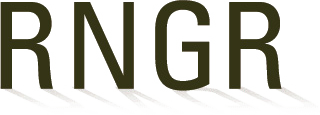
Aster (macrophyllus)
|
Martin van der Grinten USDA NRCS - Big Flats Plant Materials Center RD #1, Route 352, Box 360A Corning, New York 14830-0360 (607) 562-8404 (607) 562-8516 (fax) martin.vandergrinten@ny.usda.gov http://plant-materials.nrcs.usda.gov/nypmc |
|
| Family Scientific Name: | Asteraceae | ||
|---|---|---|---|
| Family Common Name: | Composite | ||
| Scientific Name: | Aster macrophyllus L. | ||
| Common Name: | Bigleaf aster | ||
| Species Code: | ASMA2 | ||
| Ecotype: | Mt. Desert Island, Maine | ||
| General Distribution: | Distribution:The range of Large-leaved Aster is from Quebec to Minnesota and south to Georgia. Found in semi-shaded areas or dry woods. | ||
| Propagation Goal: | plants | ||
| Propagation Method: | seed | ||
| ProductType: | Container (plug) | ||
| Stock Type: | 6 | ||
| Time To Grow: | 1 Years | ||
| Target Specifications: | Stock Type: plant plugs, 1" x 1" x 4" cell size. Height: Approximately 6 inches. Herbaceous perennial. Caliper: N/A. Root System: Firm root plug for a greenhouse crop plant. | ||
| Propagule Collection: |
Collected in Acadia National Park, Maine. Collector/Date: Collected by Martin van der Grinten during September/October by hand harvesting. |
||
| Propagule Processing: |
Seed Processing: Allow the seed heads to dry and the parachutes begin toopen. Then for hand harvested seed, all the harvested material is hammer- milled and run on a Clipper (office model) seed cleaning machine, using 1/18 round top screen, blank bottom screen an air 25% open. When the seed is harvested by combine from production fields, it is laid on tarps and allowed to completely dry. Once dry, the material is run through the hammermill with a 1/8 round screen. The next step is to run the material across a Clipper M2B seed cleaner, with 1/18 round top screen, blank bottom screen and the air 25% open. One year, started with a harvest weight of 36 pounds and the processed material/seed weighed 2.2 pounds. Seeds/Kg: 1,216,000 seeds per pound. %Germination: 12%. %Purity: 86%. |
||
| Pre-Planting Treatments: | Seed Treatment: None. | ||
| Growing Area Preparation/ Annual Practices for Perennial Crops: |
Propagation Environment: greenhouse for seeding at 70ø F and lathe house for growing and hardening off. Seed Propagation Method: Plants grown in Rootrainers. The Rootrainer (bookplanter) allows the plug to be removed by the root system. Nice plants have also been grown in 6 inch pots. Container Type and Volume: Rootrainers. 1" x 1" x 4" cell size. Growing Media: Metro-Mix 360 media. |
||
| Establishment Phase: |
Sowing Date: Start plants in greenhouse in late February for spring planting. Sowing/Planting Technique: Hand sowing with light layer of Metro-Mix 360 applied on top after seeding, followed by a through watering. Try to sprinkle 4 or 5 seeds per cell. Establishment Phase: Rootrainers need to be watered regularly. Germination is relatively uniform. Greenhouse temperature should be 70ø F. |
||
| Active Growth Phase: | Rapid Growth Phase: Monitor watering. Fertilization with Miracle-Gro can be applied. Plants should be thinned to 2 plants per cell. | ||
| Hardening Phase: | Hardening Phase: The Rootrainers are moved from greenhouse to outside lathe house prior to being transplanted in early spring. | ||
| Harvesting, Storage and Shipping: |
Harvest Date: Harvested in September/October. Storage Conditions: Store dry seed in cooler at 40ø F. |
||
| References: |
Growing and Propagating Wildflowers in U.S. and Canada, by William Cullina of New England Wildflower Society. Newcomb's Wildflower Guide, by Lawrence Newcomb, Little Brown and Company, 1977. |
||
Citation:
Van Der Grinten, Martin. 2001. Propagation protocol for production of Container (plug) Aster macrophyllus L. plants 6; USDA NRCS - Big Flats Plant Materials Center Corning, New York. In: Native Plant Network. URL: https://NativePlantNetwork.org (accessed 2025/10/16). US Department of Agriculture, Forest Service, National Center for Reforestation, Nurseries, and Genetic Resources.



